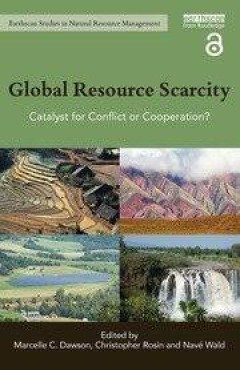Filter by

Discourse in Action: Introducing Mediated Discourse Analysis
From emails relating to adoption over the Internet to discussions in the airline cockpit, the spoken or written texts we produce can have significant social consequences. The area of Mediated Discourse Analysis considers texts in their social and cultural contexts to explore the actions individuals take with texts - and the consequences of those actions. Discourse in Action: brings toget…
- Edition
- -
- ISBN/ISSN
- 9780203018767
- Collation
- -
- Series Title
- -
- Call Number
- -

Contested Governance in Japan: Sites and Issues
Contested Governance in Japan extends the analysis of governance in contemporary Japan by exploring both the sites and issues of governance above and below the state as well as within it. This volume discusses the contested nature of governance in Japan and the ways in which a range of actors are involved in different sites and issues of governance at home, in the region and the globe. It inclu…
- Edition
- -
- ISBN/ISSN
- 9780203015384
- Collation
- -
- Series Title
- -
- Call Number
- -

Migration and Health in Asia
The processes of migration and health are inextricably linked in complex ways, with migration impacting on the mental and physical health of individuals and communities. Health itself can be a motivation for moving or a reason for staying, and migration can have implications on the health of those who move, those who are left behind, and the communities that receive migrants. This volume bring…
- Edition
- -
- ISBN/ISSN
- 9780203013564
- Collation
- -
- Series Title
- -
- Call Number
- -

Embracing New Perspectives in History, Social Sciences, and Education
This book provides a collection of articles resulting from the International Conference on History, Social Sciences, and Education (ICHSE), which was held on 11 September 2021. The Department of History of Malang State University choose "Embracing New Perspectives in History, Social Sciences, and Education" as the main topic, and elaborates on five subthemes: 1) new trends in historical researc…
- Edition
- -
- ISBN/ISSN
- 9781003295273
- Collation
- -
- Series Title
- -
- Call Number
- -

The Clean Hydrogen Economy and Saudi Arabia Domestic Developments and Intern…
This book provides a first-of-its-kind analysis of the emerging global hydrogen economy from the vantage point of one of the world’s biggest energy providers: Saudi Arabia. In 2021, and within the context of the Circular Carbon Economy framework, Saudi Arabia announced its goal to reach net-zero carbon emissions by 2060 and produce a substantial amount of clean hydrogen annually by 2030. The …
- Edition
- -
- ISBN/ISSN
- 9781003294290
- Collation
- -
- Series Title
- -
- Call Number
- -

Parliament in Ethiopia Participation, Representation and Resistance
African legislatures remain understudied, yet democratisation, development and peacebuilding all depend on these key political institutions. This book provides an in-depth analysis of Ethiopia’s parliament, a country of key political and strategic importance to the whole region. In 1931, Ethiopia’s monarchical government introduced a system of parliamentary democracy with seemingly contr…
- Edition
- -
- ISBN/ISSN
- 9781003293163
- Collation
- -
- Series Title
- -
- Call Number
- -

Global Resource Scarcity Catalyst for Conflict or Cooperation?
A common perception of global resource scarcity holds that it is inevitably a catalyst for conflict among nations; yet, paradoxically, incidents of such scarcity underlie some of the most important examples of international cooperation. This volume examines the wider potential for the experience of scarcity to promote cooperation in international relations and diplomacy beyond the traditional b…
- Edition
- -
- ISBN/ISSN
- 9781315281605
- Collation
- -
- Series Title
- -
- Call Number
- -

Meanings of Public and the Future of Public Services
Critically assessing meanings of the term "public", this book situates the emergence and expansion of "public services" within market-based forms of production and consumption. It highlights the potential for making public services more progressive within market societies, but underscores their ongoing capture by private interests and emphasises the inherent limits of reform within a "bourge…
- Edition
- -
- ISBN/ISSN
- 9781003293002
- Collation
- -
- Series Title
- -
- Call Number
- -

The Philosophy of Desire in the Buddhist Pali Canon
David Webster explores the notion of desire as found in the Buddhist Pali Canon. Beginning by addressing the idea of a 'paradox of desire', whereby we must desire to end desire, the varieties of desire that are articulated in the Pali texts are examined. A range of views of desire, as found in Western thought, are presented as well as Hindu and Jain approaches. An exploration of the concept of …
- Edition
- 1st Edition
- ISBN/ISSN
- 9780203010570
- Collation
- -
- Series Title
- -
- Call Number
- -

Museums for Peace
Museums for Peace: In Search of History, Memory and Change highlights the inspiring as well as conflicting representations and purposes of diverse museums for peace around the world. Coming from various cultural and professional backgrounds, the authors explore “what are museums for peace and what do they mean?” Some chapters introduce alternative histories of peace, conflict, and memori…
- Edition
- -
- ISBN/ISSN
- 9781003290896
- Collation
- -
- Series Title
- -
- Call Number
- -
 Computer Science, Information & General Works
Computer Science, Information & General Works  Philosophy & Psychology
Philosophy & Psychology  Religion
Religion  Social Sciences
Social Sciences  Language
Language  Pure Science
Pure Science  Applied Sciences
Applied Sciences  Art & Recreation
Art & Recreation  Literature
Literature  History & Geography
History & Geography